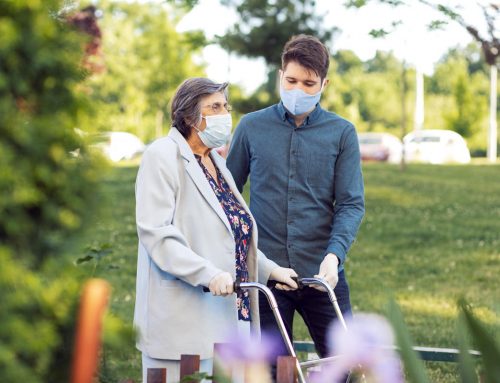COVID-19. Coronavirus. Pandemic. Shelter in place. Social distancing. Self-isolation. We’re adding new words to our vocabulary. But no matter which words are creeping into our conversations, we need to carefully consider how we’re speaking to one another.
Shared Vocabulary
Have you noticed the way social media and the news talk about senior living? Since the early reports about Lakeland, WA, I am noticing “nursing homes” is the default descriptor for all of senior living. While we have a very specific definition of what constitutes a skilled nursing facility, the rest of the country uses the generic phrase. Why? Because it’s a form of shorthand to distance those older people at higher risk from ourselves.
This type of “older than me” thinking is becoming increasingly evident among Baby Boomers. The New Yorker recently published an online article about the difficulty of convincing Boomers to take the virus seriously. Why? Boomers don’t think of themselves as being old. In their minds, the people at risk are at least 10 years older than they are. Rolling Stone’s contribution was a first-person piece that compares Boomers to teens, both groups don’t want to be told to do anything!
Marketing Vocabulary
For those tasked with marketing during the COVID-19 crisis, finding the right words in addition to the best tone and voice to communicate can be a challenge. Uncertainty is now the norm. As we consider how to move forward, we need to answer critical questions about how to speak to our audience and what the conversation should be about.
My best advice is to take a moment and breathe. It’s okay not to have all the answers right this minute. Let’s face it, the situation is fluid, and there’s no national consensus. Once we accept that, we can move forward. Punit Renjen, Deloitte Global CEO recently published an important article about the heart of a resilient leader during this crisis. In case you missed it, I’ve adapted his five key points to provide a framework as you evolve your message during the crisis.
- Recognize and acknowledge the situation. We can’t control everything, but we can control how we respond to both the big challenges and the small annoyances. Set aside time to speak with your colleagues about what’s happening. Schedule a phone call or better yet a video call, so you can listen to the pauses and the emotion in what is said and what is left unsaid. Be an empathetic and compassionate listener. Accept that there are apt to be child-size interruptions, and take the opportunity to see how they are juggling parenting, homeschooling, and working from home or outside the home. By making employees your first priority, you’ll identify needs within the larger audience.
- Remember your mission and put it first. It’s time to reread your mission statement and evaluate what you need to do to fulfill it. The mission statement for one of my clients states their primary goal is to “…uplift the lives of older adults and those who care for them.” Putting the needs of your residents and caregivers first makes it easy to identify the things everyone must do and the things that could be done later. Use the mission statement as a binary litmus test to make your decisions and allocate resources.
- Perfection is the enemy. No matter what you’re doing during this crisis, focus on delivering timely information, quality content, and clear communication to the best of your ability. Let go of any need to get it “right” or perfect. No one can afford to wait while you find the perfect word or phrase. Focus on immediate needs, and get on with it.
- Trust matters. Trust is built on a foundation of transparency, relationships, and experience. Be honest and upfront with your internal and external audiences. Own your story. Don’t let the fear of being wrong paralyze you. Be prepared to revise and change as you need to, with newer and better information. Stay in touch with your audience. They’ll remember what you did, not what you said you would do.
- Now is not all there is. This crisis will pass. When it does, experts are predicting it will speed up future changes. More people working from home, an increase in online learning, and greater reliance on delivery and shopping services will become the norm. Look at the “temporary measures” you’ve implemented. How can you leverage them to improve the lives of your community members and employees? Did a stop-gap measure, like putting your head of security in charge of your Twitter account, turn out to be a genius move? The National Cowboy Museum & Western Heritage Museum did just that, and Tim is now a Twitter star.
No matter what challenges you’re facing right now and in the immediate future, all I can promise is that you’ll be asked to change, adapt, improvise, and make it work. Pause a minute. Consider your options, and then try something. You might discover a better way to deliver your message. Remember, you’re not alone. We’re all in this together.






